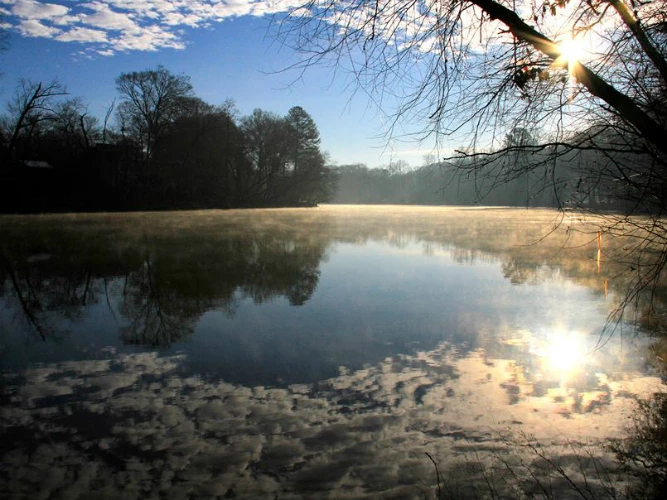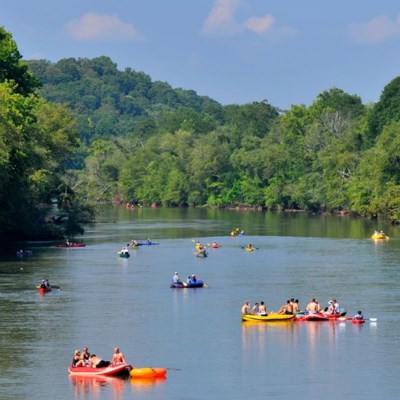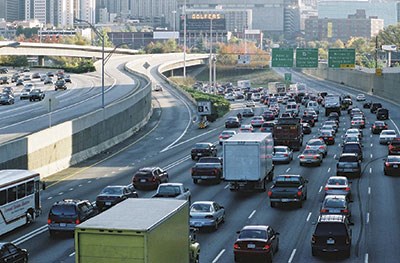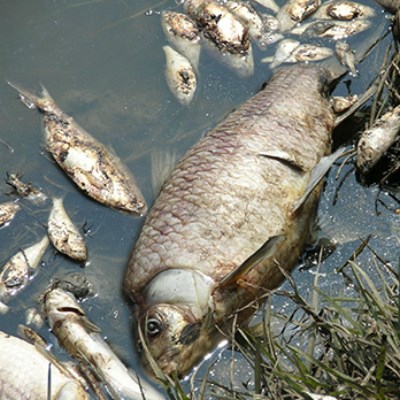The Chattahoochee River is part of Georgia's natural and cultural history. People have used the river as a water source, a food source, and a transportation channel for years. Its waters create energy that powers industry and homes along its banks. A diverse array of animals and plants call the waters and their environs home.
Climate change is already impacting the Chattahoochee River and its natural and cultural resources.

NPS photo
Our best chance in the fight to protect the river is to mitigate and reduce our carbon footprint, adapt to the changes we are already experiencing, and prepare for future impacts by working to keep the watershed as clean, natural, and healthy as possible.

NPS photo
Health of the Watershed
The Chattahoochee River extends through Georgia and into Florida, ending in the Gulf of Mexico. Everything in Atlanta and the surrounding areas impacts the river in Georgia and downstream. When it rains, water runoff from surfaces like parking lots enters the river. It increases the temperature of the water and decreases its quality. Sewage plants overflow, polluting the waters with dangerous bacteria. These impacts decrease the quality of the Chattahoochee River, the river that provides drinking water to millions of people.
The regional seasonality of rain is shifting in this watershed. More rain is coming in short downbursts which can increase flash flooding. Increased flash flooding means increased frequency of pollution from sources like sewage plant overflow and parking lot run-off. When the river is unhealthy, human health will be affected: our drinking water can become unsafe and the waters can become unswimmable.
An unhealthy watershed has effects on other living things, too. As average annual temperatures increase, the water temperature will increase. Fish will have less oxygen to survive, and the cold waters preferred by trout will be impacted. Native animals that depend on fish and other aquatic organisms may find a food shortage as warmer waters harm their food source. As floods and droughts increase, the entire ecosystem will change.
Increased development in Atlanta and beyond will also have an impact on the Chattahoochee River.

U.S. Department of Transportation photo
Development
As of 2013, Atlanta was home to about 448,000 people, a 6.6 percent increase from 2010. As predicted by climate change models for the Southeast region, the city has seen an increase in the number of days with temperatures over 95 degrees Fahrenheit. Higher average temperatures will exacerbate human health problems like asthma and heat stroke.
A rapidly increasing population will also lead to the need for infrastructure development. As more people move to Atlanta, more pollution will be produced through industrial development, human energy consumption, and human waste. More paved roads and parking lots will lead to more surfaces producing hot stormwater runoff. More people will result in an increase in sewage treatment plants that dispel hot water into the Chattahoochee River. Fish kills will increase, affecting overall ecosystem health of the river and the park site.
The impacts from development do not stop in Georgia. The Chattahoochee River takes these pollutants and carries them 542 miles downstream to Florida. The Apalachicola Bay, one of the most productive fisheries in the U.S., is currently witnessing a decrease in water quality as a result of upstream activities.
Continued development impacts to water quality will only be exacerbated by climate change, and many other people and places will suffer as a result of our inaction on pollution.

NOAA photo
River Flow Regime
Increased drought frequency and length, heavier but less frequent rainfall, and human water consumption all affect the flow of the Chattahoochee River. In addition, past and current development of dams is changing the timing and flow of the water.
In 1957, Buford Dam was constructed in the region northeast of Atlanta. Since the dam's completion, the Chattahoochee River's natural flow has been greatly altered [PDF 1.65 MB]. The river flow is highly variable with high fluctuations in water level up to three times daily. Since humans draw from the river to meet their energy needs, the river is now lower in the summer and higher in the winter. This is opposite from the flow before the dam was constructed.
The dam led to some benefits such as colder water between Buford Dam and Atlanta. This enabled trout to flourish. However, altering the natural flow of the river can lead to an increase in invasive species, an increase in water temperature during the summer as the water levels are lower, and an increase in fish kills as temperature rises. Climate change will exacerbate these impacts through droughts, floods, and even higher average temperatures.
Last updated: August 3, 2015
